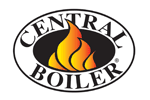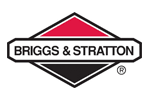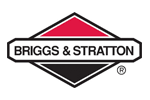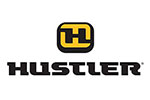P&P Blog
To achieve peak productivity, safety, and performance, follow these steps when starting your Husqvarna chainsaw.
When your chainsaw is cutting or running, be sure the chain brake is always on. If it is off, start by turning the brake on as well as the decompression valve. The decompression valve eliminates 40% of the starting efforts, giving you an easier start every time. When you have a cold saw, pull out the choke.
Always refer to your manual for specifics regarding the starting process, as some models offer an integrated stop/choke feature which will slightly change the starting process.
-When you’re about to start the saw, always make sure the blade and bar are away from the ground — you never want your saw starting into the dirt.
-Always secure the saw when starting. You can use either a standing or kneeling position for this step. -If standing, leg lock the saw. You do this by locking the saw behind one leg with the choke out, and pulling to start. You should hear a pop, but if the saw doesn’t run, push the choke in and give the saw another start. Hit the throttle and lower it to idle.
-If you want to start the saw on the ground, put the toe of your shoe through the strap or put your knee over its base. Again, be sure the bar is away from the ground, then follow the steps described above.
-Once the saw has started, let it warm up. To prepare your saw for its best performance, let the motor and the throttle run. Your saw won’t pump out oil unless the chain is moving. In addition to letting the motor run, you’ll want to warm up all of the speeds on your saw.
-Take the brake off and run the equipment up to full throttle. Wait to hear a “soar throat sound.” You’ll want to hear the sound jump rather than a constant, high straight sound. If you experience the latter, your saw is getting too much air which means too much heat. To adjust this, change the “h” or high-speed screw.
-After the saw has been in high speed, adjust the throttle again. There should still be no movement in the chain. With the T-Screw, or “LA screw,” and the chain brake still on, rotate the chainsaw as shown in the video below. This is a function of the low speed and helps ensure your machine doesn’t stall.
-Finally, wight he brake off, put the saw in low speed. In the “L” or low-speed circuit, you want a very snappy response up and down, which tells you that your L-speed has properly adjusted.
To ensure a safe and productive work session with your chainsaw, all three circuits need to be running appropriately. While you can manually control the circuits as outlined above, you can also invest in an auto-tune chainsaw. These saws have no carburetor adjustments because all adjustments are made with a micro-processor which magnetically controls the air and fuel, monitoring 7 times per second for changes in altitude and adjusts accordingly for maximum efficiency.
Always remember to use caution when operating your chainsaw, and refer to your manual for model specifications. If you have more questions about your Husqvarna equipment, you can contact a trained specialist.
























Connect with us